#Deciduous trees
Explore tagged Tumblr posts
Text



Plant of the Day
Wednesday 22 January 2025
A fast-growing deciduous tree Salix alba var. vitellina 'Yelverton' (golden willow) is often coppiced (here on a 'leg' or stem) to be grown as a shrub. This results in plentiful new growth with striking reddish-orange and yellow-orange stems. These can produce an excellent octopus sculpture for a winter display and these stems will be pruned in the spring prior to bud burst before the new foliage is produced.
Jill Raggett
#salix#golden willow#willow#deciduous trees#deciduous#tree#coloured stems#coppiced#plants#horticulture#gardens#garden#essex#RHS Hyde Hall#sculpture#winter garden
233 notes
·
View notes
Text

Chinese Fringetree (Chionanthus retusus) is tough as nails, with gorgeous foliage, snow-white flowers, and exfoliating bark. It is native to Korea, China, and Japan. It is an easy-to-grow deciduous tree that boasts displays of showy, white, clustered blooms resembling fringes each spring. While the male plant has showier flowers than the female, only the female grows attractive fruit that birds and some mammals use as a food source.
#Asian trees#white blossoms#Chinese Fringetree#deciduous trees#fringe-like blooms#snowy white caps#beautiful trees#wow#nature#gardening#worthy of travel#spring time miracle
108 notes
·
View notes
Text

Fig 1: A boxelder
How to Guerilla Trees (in CALGARY)
In my region of Southern Alberta, there are a few trees worth planting in order to enhance the urban forest. Granted, these trees are partially or completely removed from their ecological context half the time, but they still provide some services- shade, carbon storage, habitat for birds or certain insects. The list goes on.
The species I'd recommend here are Acer negundo, Fraxinus pennsylvannica, Populus balsamifera, Populus deltoides occidentalis, and Salix sp. for their ease of cultivation... In some cases I think Prunus sp. can be a decent choice... I'll use common names from here on... boxelder/Manitoba maple, ash, cottonwood / poplar, willow. Maybe cherry, maybe "moutain ash" or Rowan (sorbus sp).

What is a microhabitat?
This tree here is a boxelder on the third summer of it's little life. It is in a small depression in the soil that collects slightly more water than the surrounding. It is protected by stones, a ribbon, and stakes. This tree is watered every week or two in the heat of summer, if it hasn't rained. I believe it has a good future ahead of it.
You might notice that small trees sprout quite often along the shade of fences, or between a fence and a shed, etc. These places are sheltered from trampling and mowing, and the soil stays more moist and cool in the heat of the summer.
You may also notice that ash and Russian elms particularily can grow in cracks on the sidewalk. Growing out of the concrete isn't as bad as it appears, because there is much less competition for the soil beneath a concrete slab, especially for a plant that can grow a large root system like a tree does. Even if the soil doesn't get rained on directly, water percolates through the soil from the surroundings.
Also, the direction of a slope can significantly affect the amount of direct sunlight the soil recieves, or the amount of water that collects there. The bottom of ravines, and north slopes are the most moist. The top of a ridge or a south facing slope is the driest.
Boxelder and Ash
Boxelder and to a lesser extend ash are very hardy trees that can hold their own in this climate without having to be watered once established. These trees grow reasonably fast and are native at least to the great plains of North America. They are well adapted to growing in sites disturbed by human activities, and can also be found as far south as Texas or Arizona along sheltered streams- so their ability to survive the changing climate seems pretty certain. I also have a hunch that before the last glaciation, the range of these species probably extended further north than it does now, along with perhaps oaks and elms. Boxelder is considered a low value tree, and maybe I'll change my mind someday, but for now, it is useful because it is so easy to grow. These trees are partially tolerant of shade when they are young - and ash seedlings in particular can be found growing underneath spruce trees.
It is easy to source seedlings of boxelder, ash, and cherry. If they are in a spot that isn't exactly a good long term site for a tree, and you can either pot them or plant them somewhere else right away. Sometimes vacant lots can have dozens of tree seedlings. You have to be careful digging up even a small tree as the taproot can be a lot longer than you would expect even for a seedling that is barely 10 cm tall. I think it is better to pot them and keep them for at least a season so that they get large enough to be conspicuous.
There are multiple reasons to prefer growing a tree to conspicuous size-
1- You can find them again. You ought to mark a tree with a stake anyway, though.
2- Once a tree is 2 feet tall, it might be safe from public mowing because it has crossed the threshold of looking like nothing or a little weed to looking like a little tree.
3- you can be sure that it didn't die from being dug up.
4- A tree that is around 2 feet tall can graduate from significant competition with weeds
I choose a microhabitat where there is a depression in the land, or at the base of a slope, or especially on a north or east facing slope. These places will dry out the least.
It is also easy to collect and sprout boxelder and ash from seed en mass - you can collect kilograms of seed in the fall and winter. The seeds probably have less than a 1 in 1000 chance of surviving their first year on barren soil, but they provide mulch for their own germination. Barren soil is good enough to get them started anywhere that isn't likely to be mowed. Ravines and north or east slopes are best, as the seedlings can have a hard time getting enough water. They probably will need some water in hot stretches from July through September to survive the first 2 summers, unless they are in a particularly good site.
It helps to mark them with stakes, to mulch them. The mulch legitimizes the planting as "intentional and human," along with helping reduce competition from weeds and maintaining soil moisture. In places with mowing risk, mark them with a ring of large stones. They can be destroyed by rodents and could benefit from some protection, but seem to be less attractive to rodents than poplars.
Cherry and Rowan
There are native species in both the genus Prunus and Sorbus, but neither of these native species are popular or even common within urban habitats compared to the horticultural cultivars- the native cherry is scrubby, but common in grassland habitats - it can be difficult to identify with certainty, but P. virginiana (the native variety) has shorter racemes with sparser, slightly larger flowers and fruits , and has a less tree-like shape. The native rowan are very small trees or scawny shrubs and a very minor component of cooler forests habitats.
Both of these genera are popular flowering trees and decently hardy, and they provide a lot of food for birds. The vast majority of cherry and rowan are Eurasian horticultural varieties. General seedling care applies. Rowan seedlings aren't very common but they can be found in back alleys and gardens where they get some shade. Cherry seedlings are very common, you can most reliably find them in residential construction sites.
Willow and Poplar-Staking
These trees can be grown from seed, but they typically reproduce vegetatively- and are easy to produce with "cuttings." You can take a branch that is about thumb-diameter, cut it into about 30-60 cm stakes, and stick them into wet soil. You'll get pretty decent survival rate as long as they stay moist and are not girdled by rodents. You can keep them in a pot for the first year, or stick them into mud near permanent sources of water. Willow is found near ponds. They easily tolerate having a few shafts removed for cuttings. The largest tree-like ones and the weeping varieties are not native species.

This willow was not watered at all- I put a dozen stakes into the mud on a seep along a south-facing slope. It is 2 years old.
Poplar

There are four species in the bow-river valley and 3 of them are in the "cottonwood" subgroup (if that's valid) that appear to have a more recent ancestor with each other than with the aspens (which is the 4th species). The cottonwoods are easier to grow because they can be started from stakes like willow. Trees in this genus tree NEED full sun, and will create a quite open canopy forest with a very rich understory.
Poplar is the best tree in the bow river valley, as they are a keystone species that supports pretty much the entire ecosystem. Forests of cottonwoods create an extremely diverse patchwork of sub-habitats for a variety of shrubs and wildflowers, and they are food for a huge number of insects. They also have the handy habit of growing extremely quickly and volunteering in turfgrass. The easiest tree to grow is a volunteer poplar- I put a stake on either side of the sucker when it is around 1m tall, surround the base with a 1m ring of softball sized stones, and weed everything within that ring, and place mulch within that ring. The tree should be safe from mowing, but nothing is guaranteed. They can easily become taller than a person by their second complete growing season, and from then on, you don't have to care for them, really.
The deep rooting system and the support of their parent tree (which they are connected to underground) means a volunteer poplar doesn't have to be watered. This tree seems drought tolerant, but its survival actually indicates groundwater. It's not necessarily obvious to a casual observer, but the majority of Calgary is within the bow-river valley, which means it has a huge diffuse groundwater flow from the surrounding uplands. In prairies, trees follow the water- hugging ravines, indents.
The bark of poplars is food for rodents and the leaves are a favorite of aphids, so they might benefit from some protection- a cage of chicken wire, or a wrap around the trunk to protect the bark. They seriously are at high risk of rodent mortality. I don't do anything about aphids personally, as they are the "base of the food chain," but if I was to do something to control them, maybe wiping them off of the leaves would help reduce the damage.
Aspen
Although aspen is ecologically important, it takes extra effort to grow. You can try to protect a sucker in the same way, but they do not grow quite as quickly (less than 1m per year). Aspen cannot grow roots from a branch cutting easily (but allegedly can be done), allegedly they can be grown from a root cutting, or suckers can be dug up. The seeds can be started from the cottony fluff in late spring if the soil is kept perpetually moist and not too HOT. The seedlings are a little bit fragile and a favorite food of rabbits and rodents, so they have to be protected until they are probably about a meter high, and even then the bark is vulnerable to gnawing until they are probably thicker than a thumb.
As of this writing, my only seed-grown aspen have been eaten by rodents. Some of them roasted in the late summer sun. These trees need some care when they are young. I have had success protecting suckers with stones, stakes, and mulch.
Conifers
I've tried digging up and transplanting tiny saplings of spruce, sowing spruce, and marking and protecting small spruce saplings. They grow quite slowly and can have a hard time getting established without shade. These trees are later successional and really benefit from a forested environment- at least in the Calgary metropolitan area, they don't do extremely well without care - besides, the most common spruce in city limits is the non-native Colorado blue spruce. The Alberta white spruce (p. glauca) definitely needs to keep it's feet in the shade- north facing slopes and ravines only- but it does well growing behind fences, in the shade of other trees, between houses, etc.
Pines are not native to the Calgary area, or at least are very rare in natural environments. The lodgepole pine benefits from a slightly cooler climate. The Ponderosa pine is the second closest to being a native species and it may be a decent choice here in the future, but they come from places with much milder winters.
Birch
Birch is sensitive to heat and drought. The seeds can be collected en mass and sown on moist barren soil. I haven't grown birch. I think the paper birch is at its limit for heat tolerance as the climate changes beyond the 21st century in Calgary', and it probably will not compete well with boxelder or ash or the elms in the future. I'm sure it could be grown if it has shaded soil- the north side of a house, behind a fence, etc. The scrubby Betula occidentalis is a common large shrub in the communities of plants along natural water bodies. Collecting and sowing seeds seems easy enough if there is disturbed soil along the margins of a creek. They need constant supply of moisture. I have not cared for a sapling of birch.
Elm
Elms are not native to Alberta, but they are found to the East and the South. They are river valley trees. The American elm is a lovely tree but it doesn't reproduce easily naturally in Calgary (but it does occasionally), probably because it isn't a great climate for the sensitive seedlings. The russian elm is hardier and can be found naturalized in Montana. It probably will become more common in the future. I do not plant elms. I do not plant oaks either. The Bur Oak is native to places East of here. It is possible that in the distant past, Alberta was home to elms and oaks.
Happy sprouting. Wear an orange vest so people know you are doing important work, and I don't recommend digging with a full sized shovel within the city because of underground wires, and because it's super illegal.
9 notes
·
View notes
Text

#Park Like Area#Chain Link Fence#Wooded Area#Grassy Field#Bare Trees#Leafless Trees#Deciduous Trees#Fallen Leaves#Muted Ground Cover#Golf Course Fairway#Bare Branches#Muted Colors#Shades Of Brown#Shades Of Gray#Muted Greens#Overcast Day#Dull Day#Outdoor Setting#Daytime Scene#Nature Photography#Outdoor Shot#Quiet Moment#Calm Scene#Dark Aesthetic#Atmospheric#Visual Texture#Peaceful Scene#Natural Light#Park Scene#Rural Landscape
9 notes
·
View notes
Text

It's a perfect day!! The sun is out, and the air is just the right temperature. As you can see, Washington is, definitely, the evergreen state because the deciduous trees, too the left, are still mostly green. I love it when they, finally, change color. It looks so great with the green background 😍 💚💚💚 I love living here!!!
#perfect day#sunny#beautiful#green#deciduous trees#leaves#changing color#love#happiness#thank you#sharing#joy#nature#trees#gorgeous#i love living here#beauty#spectacular#lovely#big trees#happy#evergreen state#evergreen#fir trees#angiosperms#sky#blue
9 notes
·
View notes
Text
kinda makes me sad to see so many young deciduous trees people plant just arent pruned properly
so here you go!
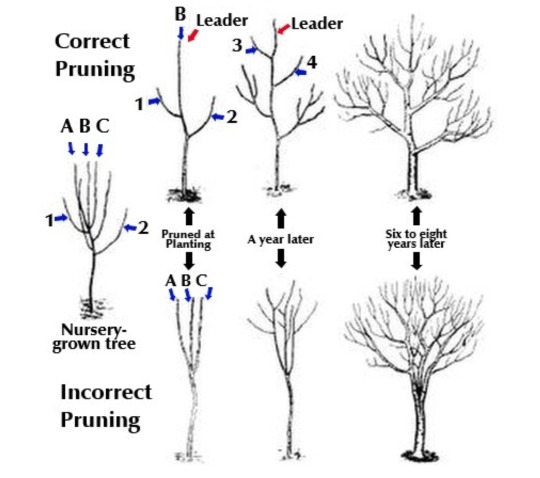

link | link
25 notes
·
View notes
Text

#writers and poets#poetry#writeblr#writers on tumblr#writing#writerscommunity#thoughts#nature#perspectives#deciduous trees#letters#art#words words words
8 notes
·
View notes
Note
🌳
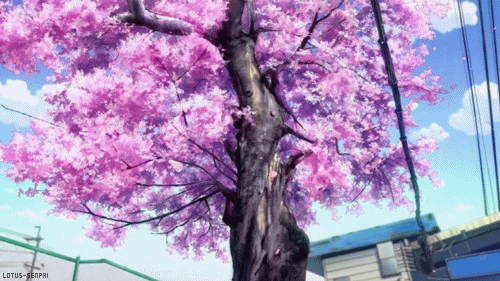
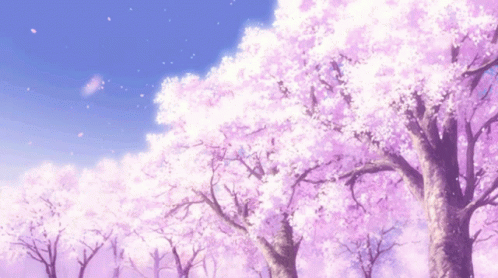
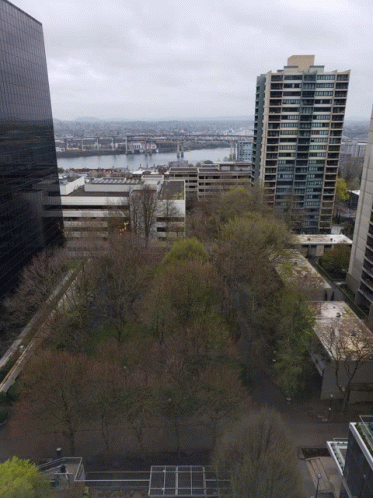
7 notes
·
View notes
Text
Okay, this made me pause and literally write out every letter that 'fell' in order (‘oomngouuhhrsrtutpntnue’), then make sure they were all contained in 'turntomushuponthergroun'.
They are, and it's very satisfying.

69K notes
·
View notes
Text

Sugarberry trees
1 note
·
View note
Text
Evergreen and Deciduous Trees - What is the Difference?

Why do some of my trees lose their leaves in the fall? Knowing why some trees lose their leaves while others remain green in the fall and winter helps determine how to care for them and maintain their health.

New Image Tree Solutions gathered information about evergreen and deciduous trees, their growing seasons, pruning times, pests, and removal signs.
Evergreen and Deciduous Tree Differences
Trees play a vital role in our environment, and understanding their differences helps us care for them properly. Two primary categories exist: evergreen and deciduous. Evergreens retain their foliage year-round, providing continuous greenery and shade. Deciduous trees shed their leaves annually, revealing intricate branch structures during winter and experiencing new growth in spring.
Evergreen Trees in Roswell, Georgia
Evergreen trees remain vibrant throughout the year. In Roswell, common evergreen species include:
1. Southern Magnolia - Magnolia grandiflora

Growing Season: Warm weather supports year-round photosynthesis, with peak growth during spring and summer.
Pruning Time: Late winter, just before new growth starts, is ideal for minimal disturbance.
Pests & Diseases: Vulnerable to scale insects, powdery mildew, and fungal leaf spots.
Removal Signs: Extensive branch dieback, trunk decay, and a consistently poor canopy signal a tree beyond recovery.
2. Eastern Red Cedar - Juniperus virginiana

Growing Season: Active growth during spring and summer.
Pruning Time: Early spring, before vigorous new growth.
Pests & Diseases: Susceptible to cedar-apple rust and bagworms.
Removal Signs: Significant wood rot, widespread infestation, and compromised structural integrity.
3. Leyland Cypress - Cuprocyparis leylandii

Growing Season: Most active during spring and early summer.
Pruning Time: Late winter to early spring to maintain shape.
Pests & Diseases: Prone to cypress canker and needle blight.
Removal Signs: Persistent dieback, excessive needle drop, and trunk lesions indicate a severe decline.
4. American Holly - Ilex opaca

Growing Season: Growth accelerates during spring and summer, with slower progress during cooler months.
Pruning Time: Late winter, ensuring less stress during active growth.
Pests & Diseases: Can suffer from scale insects and fungal infections.
Removal Signs: Chronic branch loss, significant discoloration, and declining vigor suggest replacement is needed.
5. Southern Wax Myrtle - Myrica cerifera

Growing Season: Steady growth occurs in spring and summer.
Pruning Time: Early spring, to shape before the growing cycle.
Pests & Diseases: Vulnerable to spider mites and leaf spot.
Removal Signs: Extensive dieback, structural weakness, and persistent pest infestation signal the need for removal.
Deciduous Trees in Roswell, Georgia
Deciduous trees provide seasonal beauty and adaptability. In Roswell, typical deciduous species include:
1. Red Maple - Acer rubrum

Growing Season: Vigorous growth during spring and summer, with brilliant fall colors.
Pruning Time: Late winter or early spring, before buds break.
Pests & Diseases: Susceptible to aphids, leaf scorch, and fungal infections.
Removal Signs: Progressive branch loss, significant bark damage, and recurrent disease outbreaks suggest removal.
2. American Elm - Ulmus americana

Growing Season: Rapid growth during warm months; canopy fills in during spring and summer.
Pruning Time: Early spring, ensuring minimal interruption during growth.
Pests & Diseases: Vulnerable to Dutch elm disease and elm bark beetles.
Removal Signs: Extensive wilting, dieback across branches, and visible signs of fungal infection often indicate it is time to remove.
3. Flowering Dogwood - Cornus florida

Growing Season: Flourishes in spring with blossoms, followed by steady summer growth.
Pruning Time: Late winter, before spring flowering begins.
Pests & Diseases: Prone to anthracnose and powdery mildew.
Removal Signs: Noticeable crown thinning, persistent leaf drop, and recurrent disease indicate replacement may be necessary.
4. Sweetgum - Liquidambar

Growing Season: Active growth during spring and summer, with vibrant fall foliage.
Pruning Time: Late winter, after dormancy ends.
Pests & Diseases: Susceptible to scale insects and canker diseases.
Removal Signs: Dead branches, trunk splitting, and reduced canopy density signal removal.
5. Tulip Poplar - Liriodendron tulipifera

Growing Season: Vigorous growth during spring and summer, with tall, majestic stature.
Pruning Time: Late winter, before the tree begins active growth.
Pests & Diseases: Vulnerable to leaf spot and fungal infections.
Removal Signs: Declining structural strength, significant branch dieback, and widespread pest infestation suggest replacement is necessary.
Best Time to Prune
Pruning evergreen and deciduous trees in late winter or early spring is best. This timing minimizes stress on trees while promoting vigorous growth during the active season.
Managing Pests and Diseases
Arborists play are key in identifying and managing pests and diseases in both tree types. Regular inspections and timely interventions can prevent minor issues from escalating. Common signs to watch for include:
Discolored or fallen leaves
Bark cracking or oozing sap
Visible pest infestations or webs
Stunted growth or dead branches

When these symptoms become widespread, it may be necessary to consult a professional to determine whether tree removal is the best option.
Documentation and Reporting
For communities, cities, and states, detailed reports and documentation from certified arborists help support decisions regarding tree management during severe pest or disease outbreaks. These reports often include:
Tree health assessments
Recommended treatments and maintenance plans
Photographic evidence and analysis of disease spread
Impact evaluations on urban forest health
Such documentation ensures proper measures are taken to protect public safety and environmental quality.
Evergreen and Deciduous Tree Species
In this article, you discovered information about evergreen and deciduous trees, including their growing seasons, pruning times, pests, and removal signs.
Understanding the differences between evergreen and deciduous trees is essential for proper care and maintenance, especially in the Roswell, Georgia, area.
Ignoring the differences between deciduous and evergreen trees will lead you to provide improper care, poor pest management, and premature failure.
Sources: hort.ifas.ufl.edu/woody/evergreen.shtml byf.unl.edu/deciduous-trees askdruniverse.wsu.edu/2019/12/20/evergreen-trees-green-year
To see the original version of this article, visit https://www.newimagetreesolutions.com/blog/evergreen-and-deciduous-trees-what-is-the-difference
#tree service roswell ga#tree service#tree disease and pest prevention roswell#arborist#Tree Species#Evergreen Tree#deciduous trees#landscape
0 notes
Text

Autumn - it always brings such sweet memories of shuffling through the colourful leaves and picking the prettiest ones to make Thanksgiving crafts with my cousins.
#autumn#fall#seasons#nature#October#deciduous trees#beauty#Thanksgiving#memories#falling leaves#colours
18 notes
·
View notes
Text

★彡𝓛𝓓ミ★
1 note
·
View note
Text

took this pic from my car and held up traffic once the light turned green because I wasn't paying attention oops
#Rural Home#Autumn Evening#Cozy House#Split Rail Fence#Warm Glow#Bare Trees#Overcast Sky#Damp Grass#Reflective Road#Tranquil Scene#Melancholic Vibes#Suburban Life#Peaked Roof#Yellow Light#Deciduous Trees#Muted Green#Rainy Day#Cloudy Sky#Rural Setting#Suburban Home#Photo Realistic#High Resolution#Hyper Realistic#Late Autumn#Early Winter#Soft Lighting#Red Shed#Detailed Photography#8K Resolution#Peaceful Evening
7 notes
·
View notes
Photo
Embroidery cushion with colourful deciduous trees Stickpolster mit bunten Laubbäumen Подушка для вышивания с разноцветными лиственными деревьями Coussin à broder avec des feuillages colorés

#embroidery pad#embroidery cushion#colourful#deciduous trees#Stickpolster#bunt#Laubbäume#coussin à broder#multicolore#arbres à feuilles caduques#подушка для вышивания#подушечка для вышивания#разноцветные#лиственные деревья#mixed forest#mixed woodland#Mischwald#смешанный лес#forêt mixte#conifers#Nadelbäume#conifères#хвойные деревья#хвойные породы
270 notes
·
View notes
Text
Becoming Tree Wise
So here’s the deal. A friend and I were supposed to lead a tree workshop today, but the weather didn’t cooperate. I’m not complaining about the few inches of snow–it’s the sleet that came first and the rain that is now eating up some of the snow that bothers me. That said, I’m going to take you on a deep dive to meet some of the trees of Maine in their winter format. We are so fortunate to live…
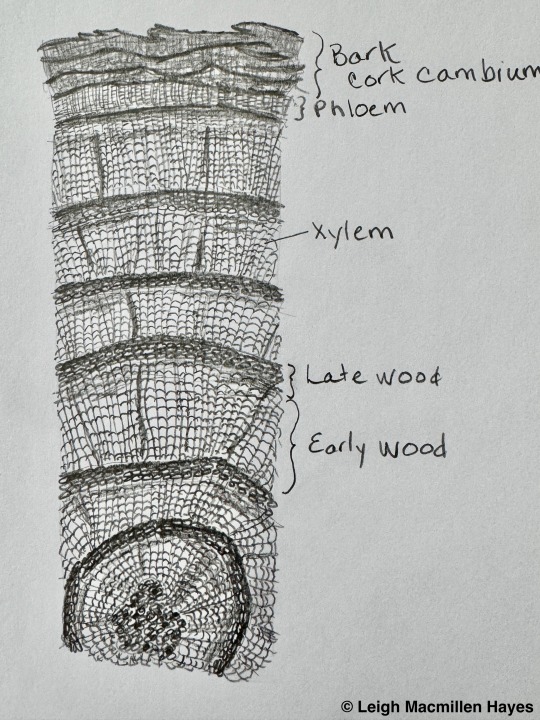
View On WordPress
0 notes